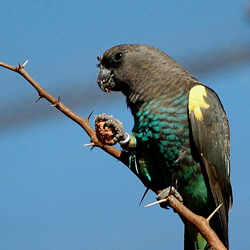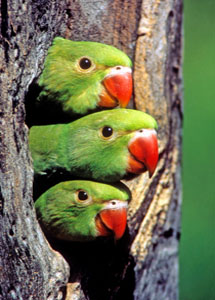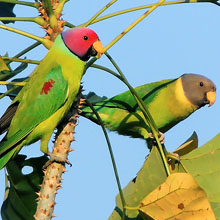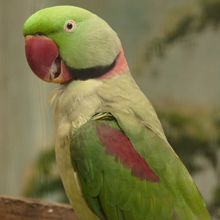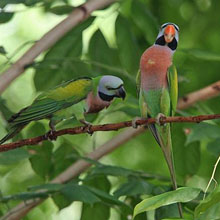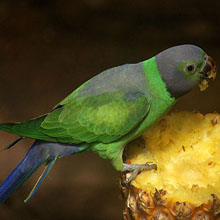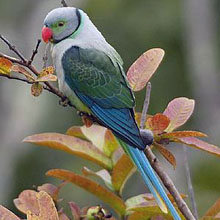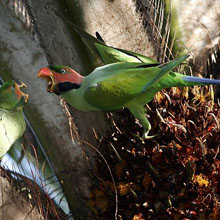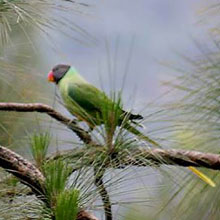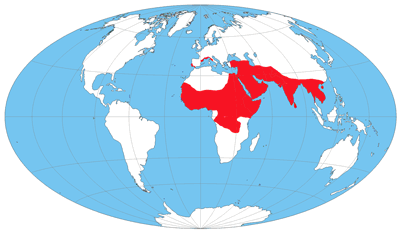Psittacula Parrots
|
Psittacula parakeets, often referred to as ring-necked parakeets, are some of the most elegant of all the parrots. There are 14 species of Psittacula parakeets and many subspecies. The colorations and markings vary between the species but they all share the common characteristics of a sleek body shape, long tapered tails, orange to red colored beaks, vividly colored heads and unique neck markings. The males and female birds are easily differentiated from each other. The male of the species has a brightly colored head and a distinctive black ring around his neck. The female has paler colored feathers and either no ring or a very light colored ring. Two of the most common species kept as pets are the Alexandrine Parakeet and the Rose-Ringed Parakeet. These birds are very good talkers and they are described as intelligent, outgoing and independent. They require one on one interaction to form strong bonds, and if properly socialized, enjoy interacting with their human flock. Ring-neck parakeets are not physically needy birds and not as cuddly as some parrot species. Ring-necks are avid chewers and must be provided with safe, destructible wood toys to satisfy this instinct. |
|
|
|
|
|
Psittacula parakeets originate from an area ranging from Africa to South-East Asia and the islands of the Indian Ocean. The ring-necked parakeets habitat is mostly forest and open woodlands preferentially near cultivated farmlands and orchards. They are often observed in small flocks but join into much larger flocks where food is plentiful. The ring-necks diet is largely fruit, vegetables, seed, nuts, blossoms and farm crops. They are known to cause extensive damage to those crops and are therefore considered as agricultural pests.
|
Listen to Alexandrine Parakeets in the wild: View a video of an Indian Ringneck digging a nest hole: Psittacula eupatria
© 2015 Cornell University
|
|
|
|
|||||||||||||||||||||||||||||||||||||||||||||||||||
|
To see more pictures and obtain information about various Psittacula species click on the links below:
|
(source: bird-stamps.org)
|
Related Articles
 African Parrots
African Parrots
 Parrots of Continental Asia
Parrots of Continental Asia







































